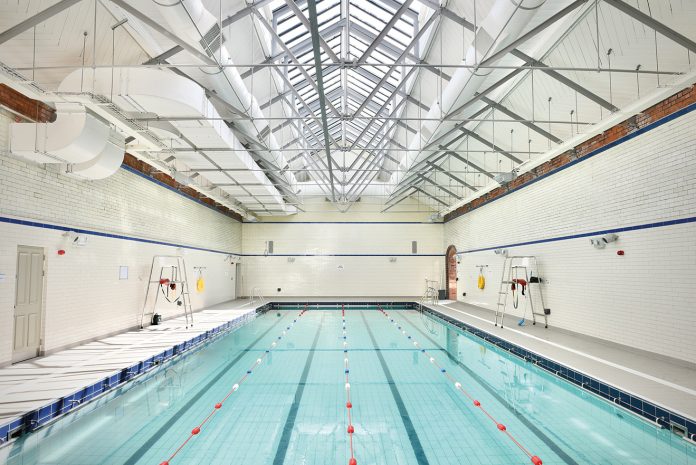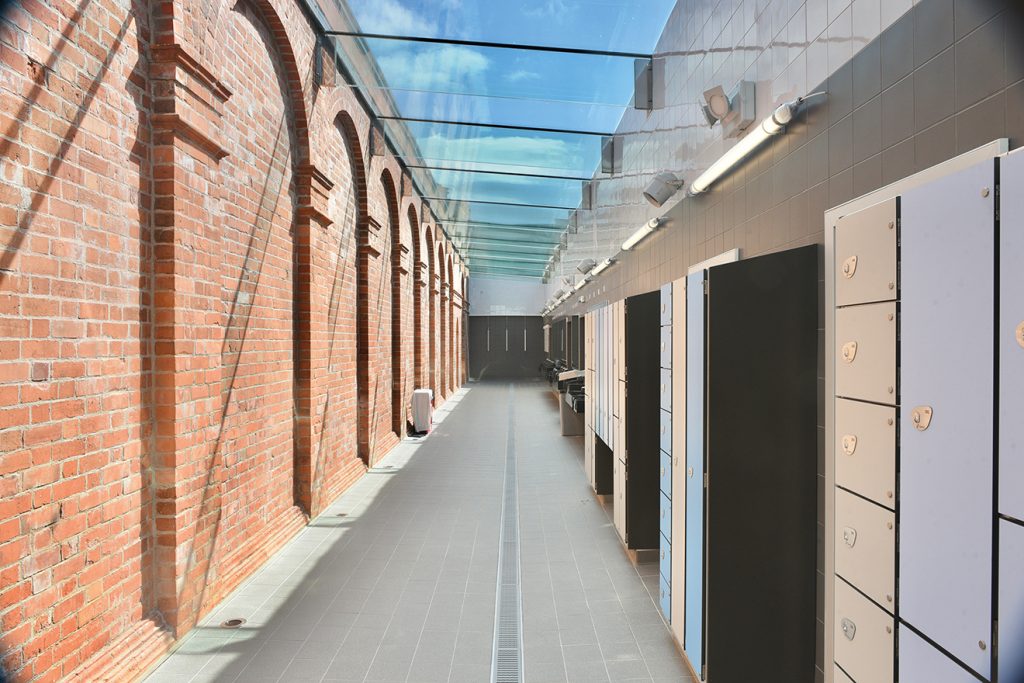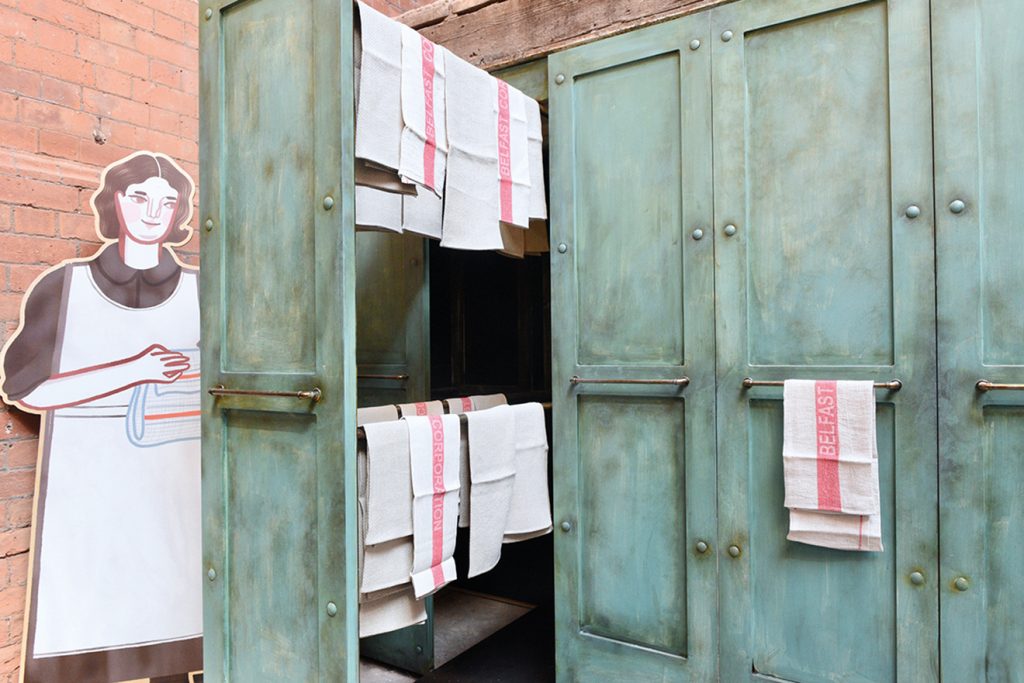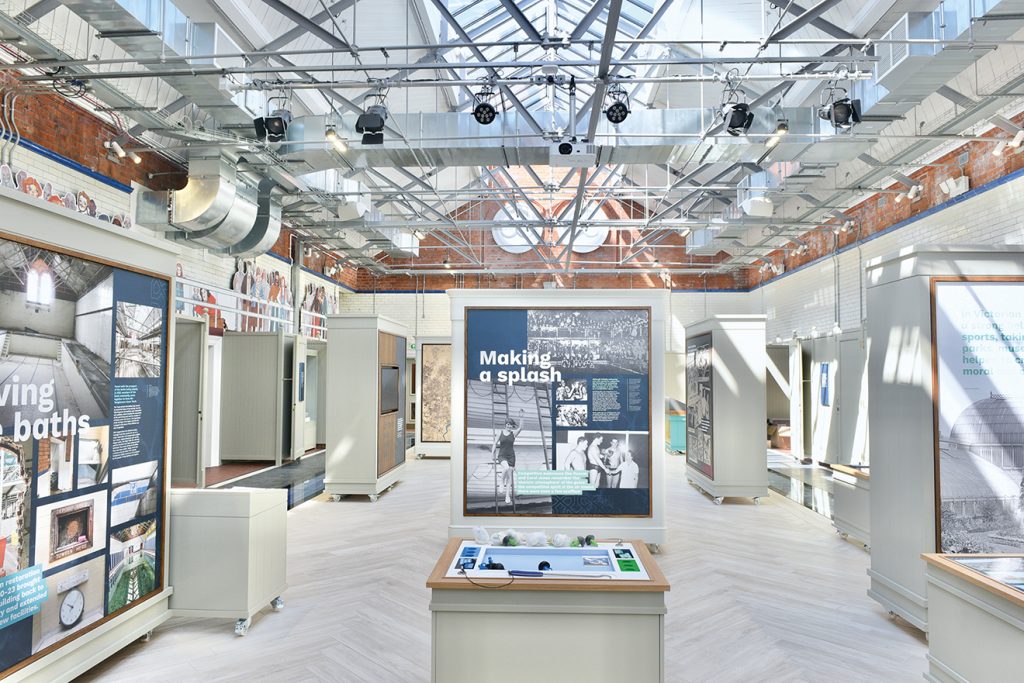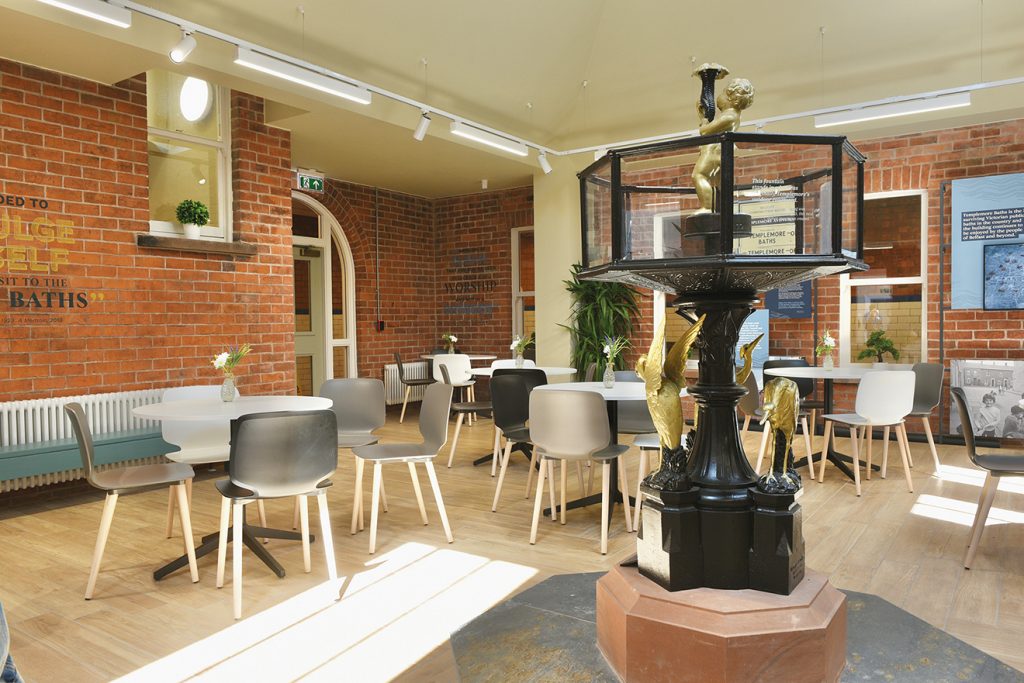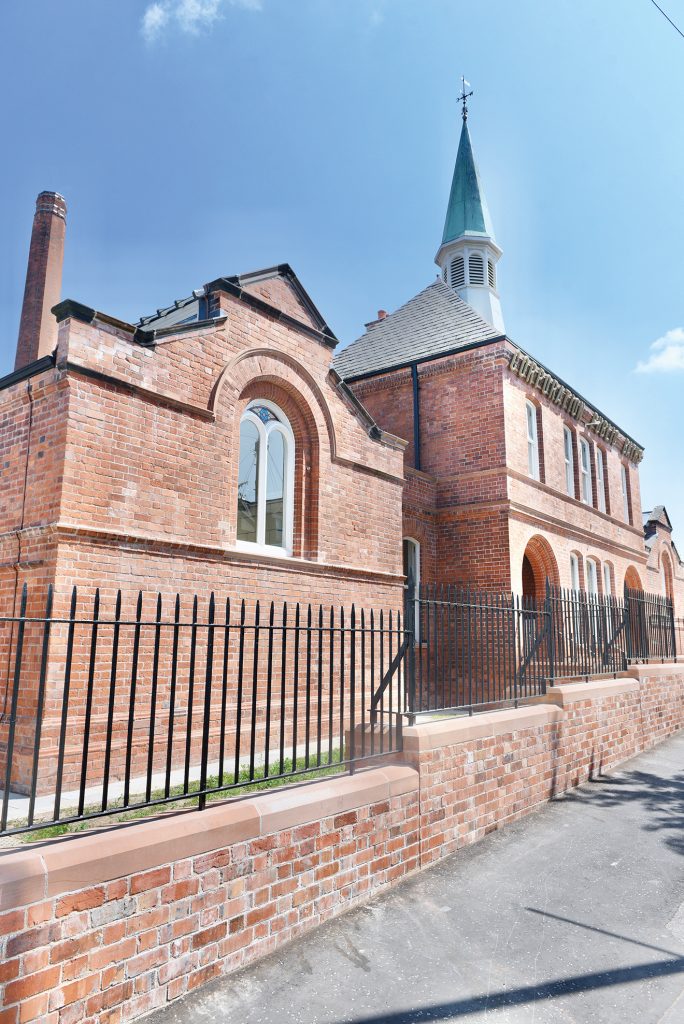In this issue of NI Builder, another case study provides a glimpse into life in Belfast at the end of the 19th century. The workers at the Thompson Dry Dock, who inspired the transformation of the Pump House building into a new distillery (see page 10), may very well have joined the other “dockers” who attended Templemore Baths, in East Belfast, to wash before heading out to the dance halls on a Friday night.
In this huge project led by Heron Bros, the contractors preserved and restored as much as possible of the features of the original building and built a brand-new leisure centre.
A snapshot of Victorian life
The Templemore Baths were built between 1889 and 1892 and are the last working Victorian baths in Europe. They offered washing and sanitary facilities for the families who came to live in the city attracted by the development of the Harland and Wolff shipyard and other manufacturing industries, such as rope making, machine works and distilling.
At the time, Templemore was one of the four bath houses in Belfast and, as architect Rory Rankin told NI Builder (see page 30), the city developed around those locations. These establishments were vital to the population not only for offering a well-deserved bath at the end of the week but also for providing washing facilities in an urban area at a time when cholera and other infectious diseases posed a great danger to life and health.
When the Baths opened in 1893, the red brick Renaissance-style building designed originally featured separate entrances for first and second class and for men and women, who could wash in the slipper baths in cubicles or go for a swim in the first- and second-class swimming pools, with poolside dressing boxes.
The cubicles with slipper baths and the smaller original pool are now part of an exhibition, with pictures, memorabilia and interactive sections with videos, audio content and even a few surprises – be careful not to open a cubicle door without knocking first! Visitors can also travel back in time with the smell of carbolic soap, which filled the air when the Baths were fully operational.
The newly built 28,000sq ft extension has more than doubled the building’s footprint and features its own bit of history as well. The new leisure centre was erected where previously stood the Ulster Hospital for Women and Sick Children, built in 1872. The hospital was severely damaged in the Belfast Blitz in 1941 and moved to Dundonald, where it was renamed Ulster Hospital, as it is known today.
Treasures along the way
A modern café now stands in the old Bath’s courtyard and features one of the artefacts found during the excavation of the grounds by the Heron Bros team: a beautiful Victorian fountain. Once forgotten, the fountain now takes a central place.
The team also discovered old early 20th-century wooden benches that have been restored and other little treasures. “We also found old tools, spanners and other objects; we protected them all in situ and then restored them,” Site Manager Diarmuid Mullan told NI Builder (see more on page 26). “Some of the original bricks are stamped internally, so they were cleaned and now can be seen on display as well.”
Some of the findings also got a second life, even if in a different shape. In a great example of the very modern concept of circular economy in a heritage project, elements of the original fabric of the Baths were repurposed within the building. For example, timber purlins were used for window repairs and the bricks were reclaimed and reused.
Best of both worlds
The new extension at Templemore Baths features a 25-meter pool, a bespoke sauna, and heated loungers for users to relax after a steam session (see more on page 35), a luxury that the Friday night dockers probably could have never imagined. However, visitors today are able to enjoy the best of both worlds and go for a swim at a unique landmark building.
For the full feature on Templemore Baths, check out NI Builder Issue 34-3 June-July here.
Find out more about Templemore Baths here!



